How do you go about making your steep stairs safer and not spending too much money?
Very often, when moving house, the stair refurbishment is postponed. You probably know that, bought a beautiful new house and fanatically doing and renovating. Of course you have to prioritize and make choices. New bathroom in and gone with those old spherical tiles. The kitchen also needs to be new, with a nice sleek marble top. After fitting and measuring you have it done and your dream place starts to take shape. Time is running out and you have to postpone a few things. Due to lack of time or because the budget is almost exhausted. Let's leave those stairs for a while, after all we have to move and walk up and down the stairs and then things get damaged again.
And so the stairs are postponed but also often forgotten. Once you live again, odd jobs are out of the question and very understandable. You are left with that unfinished hall and stairs, but that has to be done for a while. Only it is steep and dangerously slippery and how can you make it a lot safer with minimal costs, even if it is only temporarily.
There are various options to make your stairs a lot safer with a limited budget, without major adjustments:
- Wear shoes or non-slip socks.
- Place an extra banister on the spindle.
- Install stair corner profiles on the steps.
- Place between steps.
- Install LED staircase lighting with sensor.
- Apply non-slip stair strip.
Wear shoes or socks.
With rubber-soled shoes, climbing stairs will be a lot safer. You can also buy special non-slip socks for indoors as an intermediate solution. These non-slip socks are not that expensive and work well. You can buy the socks for about 10 euros and will last a few months.
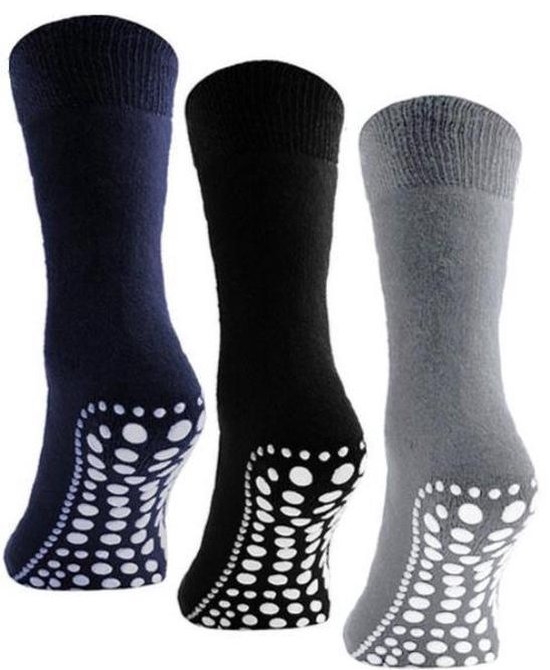
Installing an additional railing.
Often there is a wall railing on one side, it is better but also much safer to apply an extra wall railing for the other side so that you can find support with both hands when walking the stairs. There is often a stair post on the other side of your stairs. Here you can suffice, as in the photo below, place 2 short handrails or round sticks on 2 handrail carriers. The price for a simple wooden pine handrail is approximately 60.00 with 2 supports.
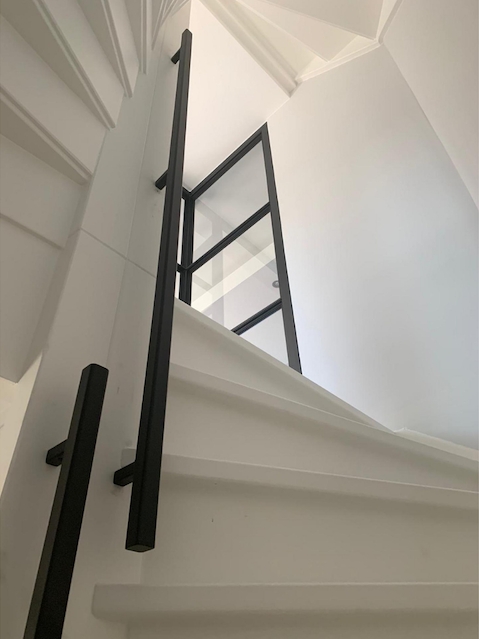
Install stair profiles. On the step.
Install a stair nosing on the edge of the stair step. A Stair Nose is an angle profile that you glue or screw onto the front of the stair step. You can buy stair noses in different versions such as aluminum, plastic and rubber. The cost to apply this for your stairs is around 100.00 euros for a staircase with 13 steps.
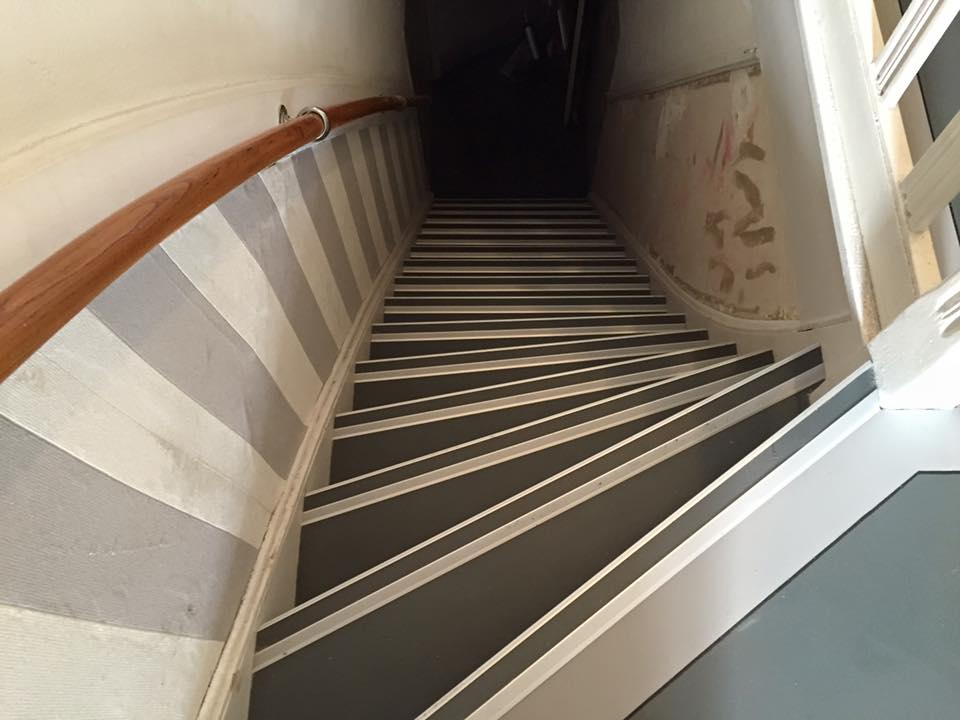
Place between steps on each step.
Between steps make climbing stairs a lot easier. The custom-made wooden blocks are placed on your stairs. This doubles the number of steps on your stairs and halves the step height. You do not have to lift your leg high. This way you can walk up and down your stairs with less effort, but above all a lot safer. The blocks are not cheap, so to make your stairs safe quickly and not too expensively, this is not a good choice, but suppose you need a stairlift then it is a very nice intermediate solution.
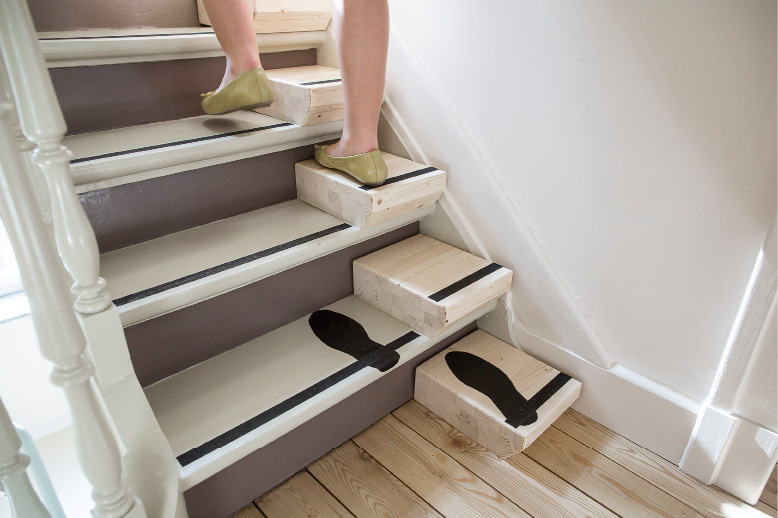
Install stair lighting locally.
By properly lighting your stairs, walking on them will be a lot safer. Especially in the night hours it is important that you can see the stairs well, especially the first and last step. There are LED light blocks for sale that, with a motion sensor, ensure that the light is switched on briefly, say a minute. These LED blocks work on a battery and last a very long time. The price varies between 25.00 and 50.00 euros. An absolute must for your safety.
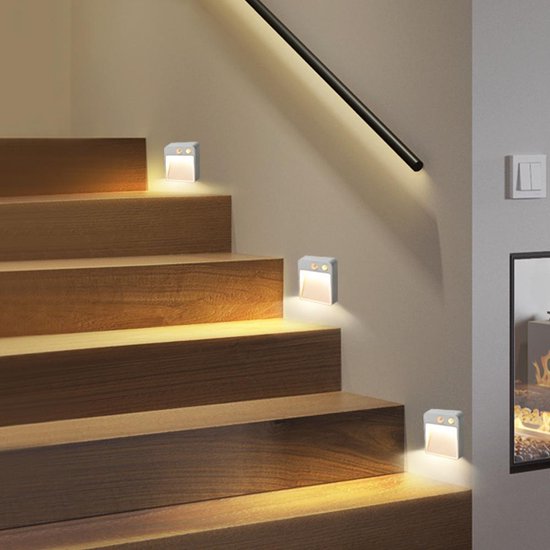
Apply non-slip strips.
You can provide each step with a non-slip strip. Stair steps made of wood or tarpaulin can be very slippery and you can easily make a fall. The anti-slip strips are available in 2 types, the milling strip and the self-adhesive rubber strip. The milling strip must be pressed into a groove. If this is not in your stair step, you should have it made or if you are handy do it yourself. The costs for this are around 150.00 euros for one staircase. You can also choose a self-adhesive strip like the one below that you can buy for about 50.00 euros. There are also tapes for sale with a non-slip effect that are even cheaper for a few tens, you already have a roll sufficient for one staircase.
You see, it does not have to cost a lot of money to make your stairs safe, if you opt for an extra handrail, LED light in 3 places on the stairs, a good anti-slip strip on the step you will lose 200 euros at most.
But what exactly is a steep staircase you may ask?
I'll explain it to you. Different definitions can be entered here, in general it comes down to the stair angle being different. As a result, the stairs are more or less inclined. In old houses the stairs were often set as steep as possible. The living areas were small and stairs would otherwise take up too much space. (floor area) This is why the stairs were placed as steeply as possible. Nowadays the stairs are no longer so steep. The stairs must comply with a building decree, something that was not so strict in the past. This Building Decree describes in detail what a staircase must meet in terms of size, material and safety regulations. The stairs are nowadays made much lazier, which means at an angle of at least 45 degrees.
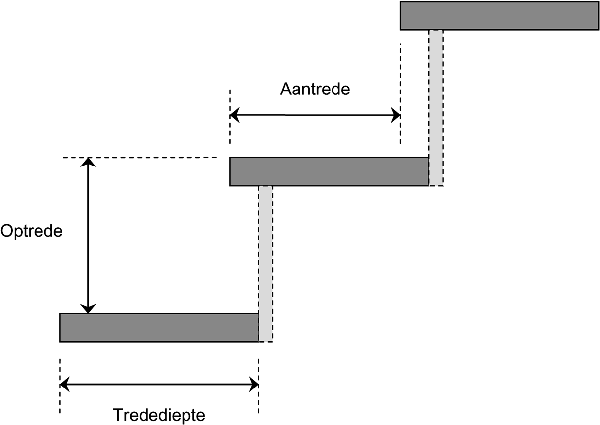
How do you know if your stairs fall under a steep staircase? The staircase maker uses a simple calculation formula for this. You add 2x the step and 1x the step together, if this addition is between 60 and 65 cm, then you have a steep staircase. The step is the measurement from the front of the step to the front of the next step. The rise is measured from the top of the step to the top of the next step.
Can you do something about a steep staircase?
Sometimes something can be done about it, because you could make the step a little deeper by placing a transfer step over the existing step. First you screw and glue a beam to the front of the stair step. Then glue over the old stair step and the new transfer step. You can buy transfer steps at the hardware store or you can make them from 12mm mdf.
Can I improve the safety of my steep stairs?
If your stairs are very steep and the depth of the stair step is slightly below 20cm, it is safer to use a non-slip milling strip or an anti-slip adhesive strip on these types of narrow steps. If you don't want this, it's better for safety to walk backwards down. Make sure that you find the necessary support with a wall railing.


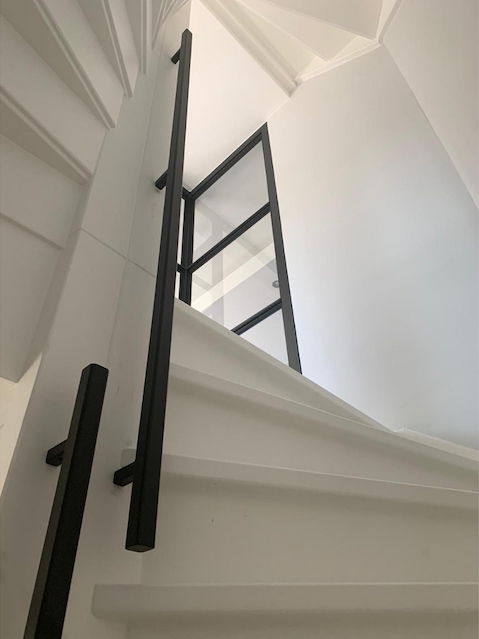
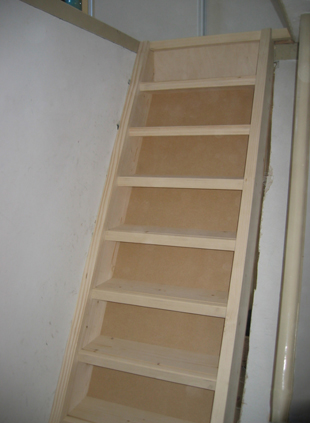







Comments
Login to give reaction Your comment will be posted as soon as it is approved.